|
The sun does unfortunately set on the dissorophid empire (arguably it's not even an empire to start with, but I'm treating it like one for the sake of being dramatic). To round out this five-week topical series on dissorophids, I'm wrapping up with the last-surviving dissorophids, which as suggested by the title, are found to the east in Eurasia.
This week for Temnospondyl Tuesday, we're going from one my blurb last week on one of the most charismatic dissorophids, Platyhystrix, to one of the most confusing dissorophids, Aspidosaurus. If you compare the two, they're basically known from the same type of material - mostly neural spines - but Aspidosaurus has normal-sized spines, so it doesn't get the celebrity treatment... Nonetheless, it is, *if correctly interpreted,* the longest-lived genus of dissorophid, so it apparently did something right to stick around for so long. 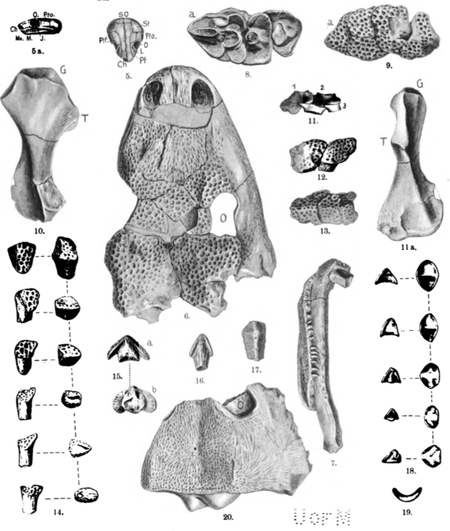 Illustrations of the holotype of Aspidosaurus chiton by Broili (1904) - the Aspidosaurus material is from #6-19; ignore the 'microsaur' in the top left. Illustrations of the holotype of Aspidosaurus chiton by Broili (1904) - the Aspidosaurus material is from #6-19; ignore the 'microsaur' in the top left. A casualty of war Aspidosaurus probably has the most interesting history for a dissorophid considering the first one ever described was blown to smithereens by the Royal Air Force. It's somewhat common knowledge that the holotype of Spinosaurus aegypticus, the famous sail-backed carnivorous dinosaur from Africa that makes an appearance in Jurassic Park III and that is often cited in the debate over "biggest meat-eating dinosaur ever," was destroyed during World War II in an Allied bombing of Munich. Of course, Spinosaurus wasn't the only fossil in the museum (The Bavarian State Collection of Palaeontology and Geology / Bayerische Staatssammlung für Paläontologie). There are two good articles for reading up on the history of the museum in general (Wellnhofer, 1980; Reich & Wörheide, 2018), which provide a more detailed synopsis of the previous holdings of the museum, which were quite diverse and the vast majority of which were lost in the bombing. Among these other losses was the holotype of the type species of Aspidosaurus, A. chiton, collected at the turn of the 20th century from Texas by German palaeontologist Ferdinand Broili, who also has his own genus of dissorophid, Broiliellus, named after him. The holotype is represented by a partial skull and associated postcrania, which probably doesn't sound all that remarkable, but consider that there is only three other specimens of Aspidosaurus that includes even a fragment of cranial material, and the holotype thus becomes a lot more important. The only surviving record of the holotype is Broili's (1904) publication, which has decent figures and a pretty good description (albeit in German), but the preservation was apparently too poor to identify sutures. The subsequent material of Aspidosaurus has not necessarily proven itself to be much better preserved, which has ended up to be a real problem for phylogenetic analyses. Cacops and Dissorophus might be the best-represented dissorophids in the scientific literature, but neither is the most famous dissorophid. That honour falls to Platyhystrix (pronounced 'plat-e-his-tricks'), the "flat porcupine." Sure, this one's never made it into any movies, but neither have practically any temnospondyls. Darren Naish did a Tet Zoo blog post on Platyhystrix a few years back, and the internet is rife with reconstructions (of varying quality and accuracy) of this peculiar animal. There's even a plastic toy model (1:8 scale) that was made by Play Visions as part of a 1998 extinct amphibian series that included Diplocaulus, Peltobatrachus, and Gerrothorax (this is apparently a highly valued and rare collector's set that I may have had at some point in my childhood). It has yet to make it into one of the mobile Jurassic World games, arguably the "I know I've made it when..." but also the pinnacle of "....that is not what I look like." But how much of Platyhystrix do we actually know, and why it is so popular? For the second week of the Dog Days of Dissorophids, I'm covering the eponymous Dissorophus! If you didn't catch last week's post with the first entry in this topical series, pop over there to read the little intro blurb on what a dissorophid is so you're up to date for this week's post. It is a veritable batrachian armadillo. -E.D. Cope on Dissorophus |
About the blogA blog on all things temnospondyl written by someone who spends too much time thinking about them. Covers all aspects of temnospondyl paleobiology and ongoing research (not just mine). Categories
All
Archives
January 2024
|
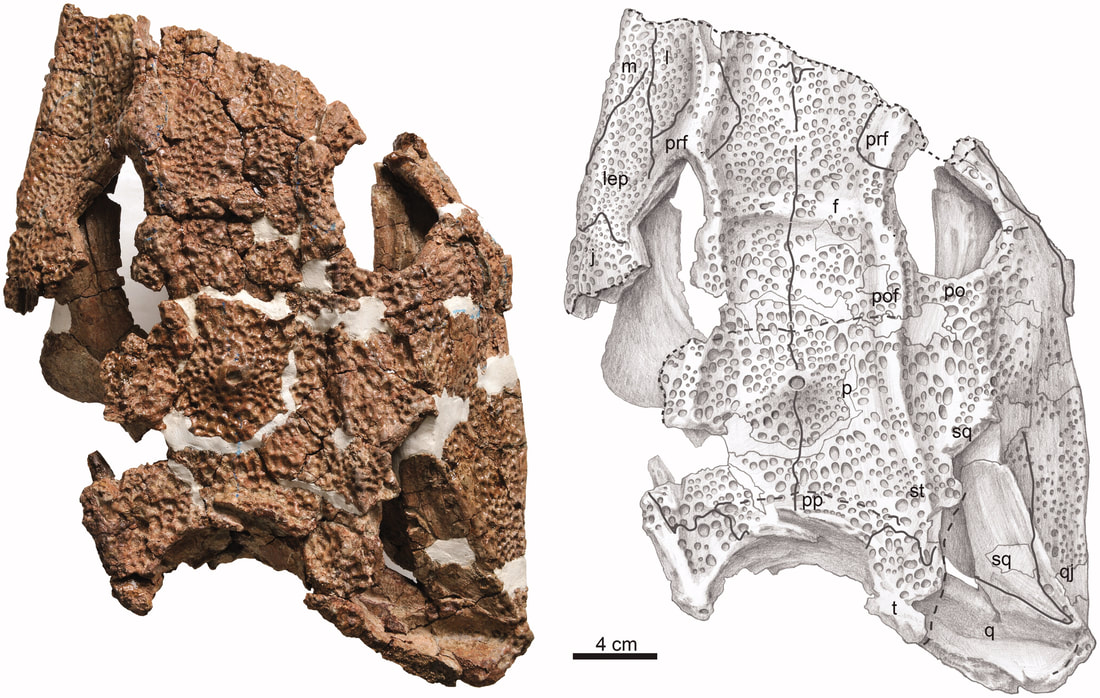
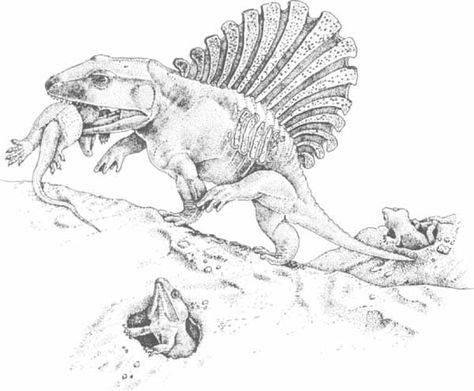
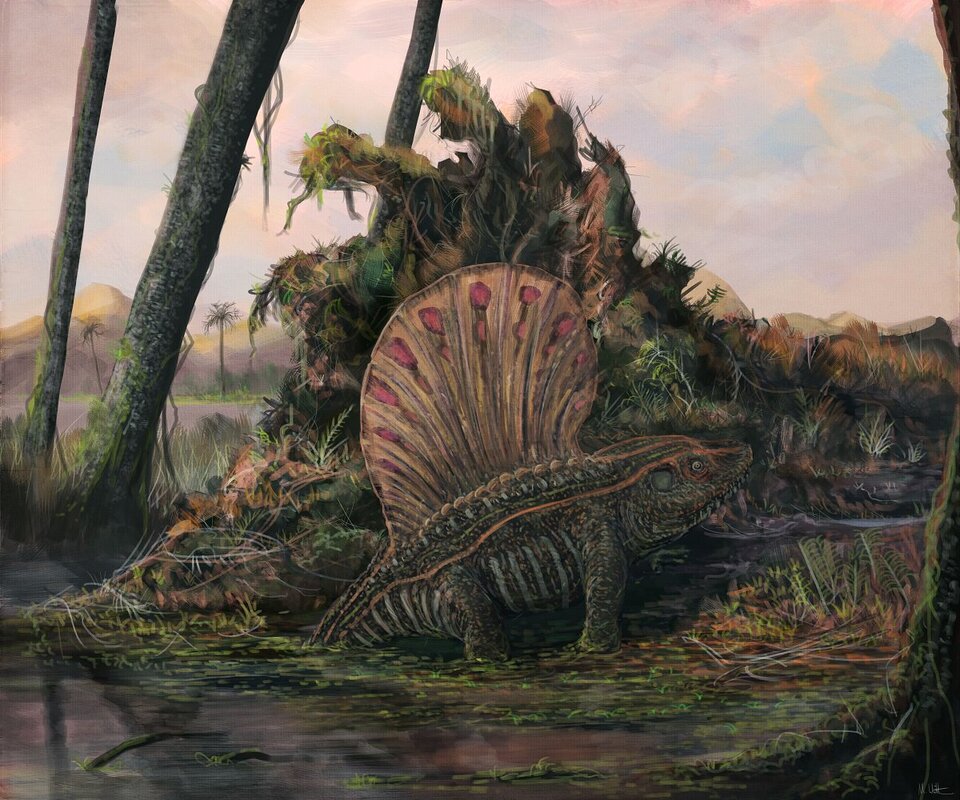
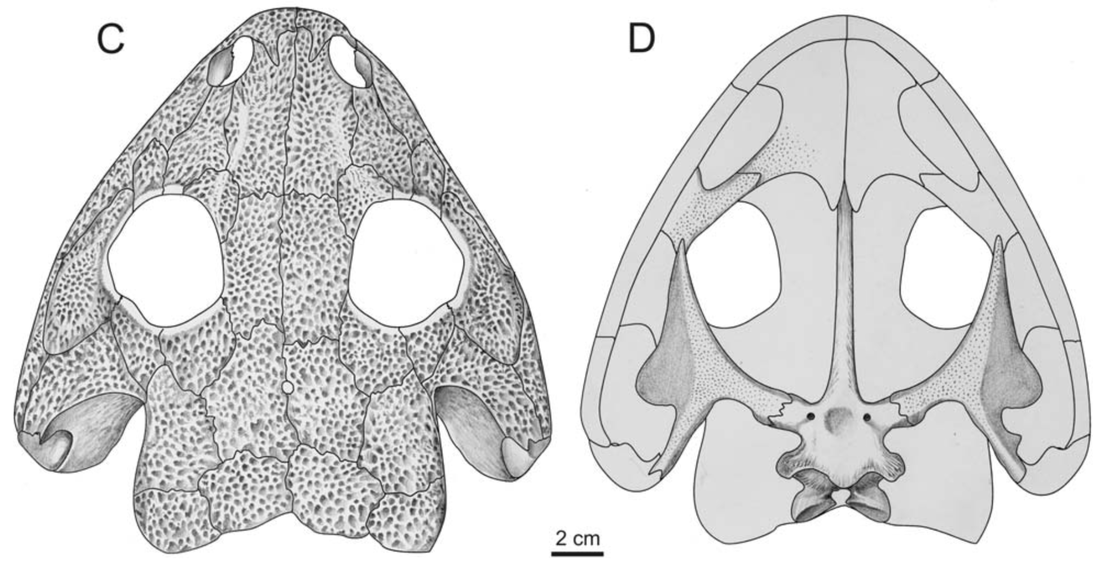
 RSS Feed
RSS Feed
